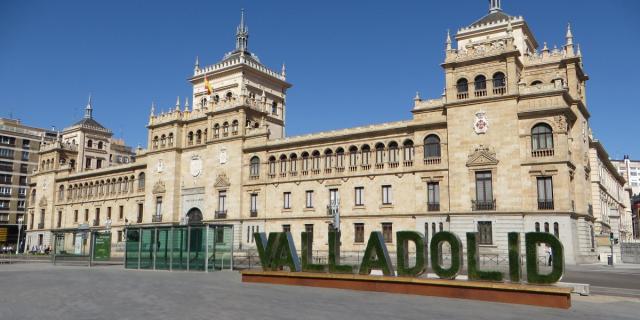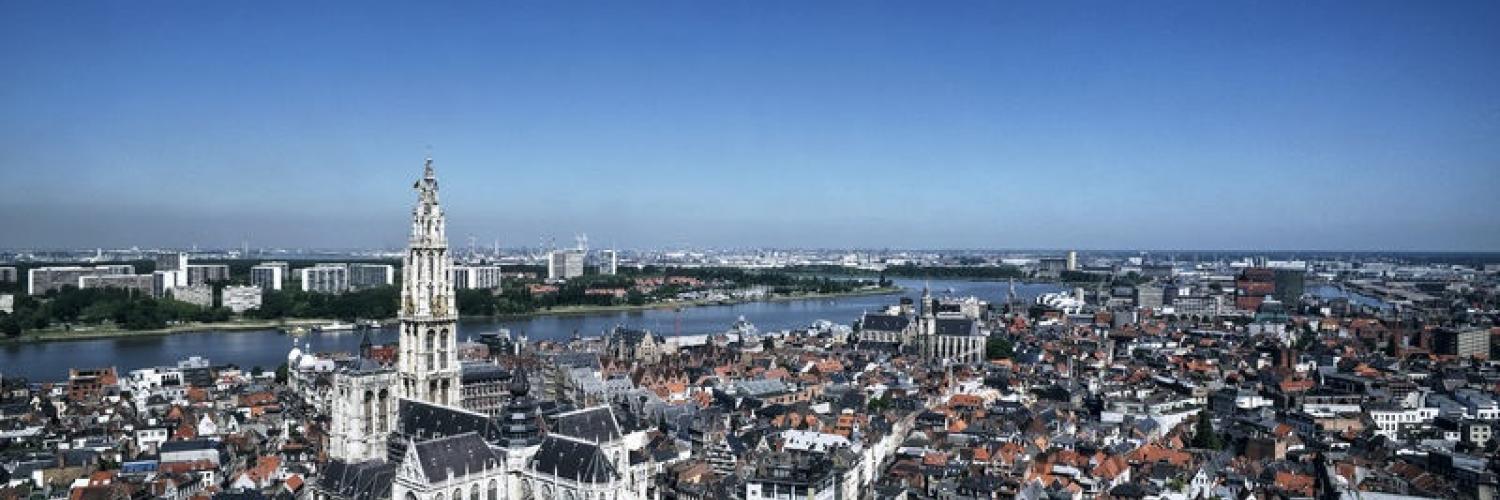
Smart ways to Antwerp: a city with an open mind to mobility
Paris, the 10th of May 2021
The next stop in our World Mobility Tour is Antwerp, a historic city in the north of Belgium, the foremost petrochemical centre of Europe, the second largest port in Europe, and the global diamond trade hub. Our discussion with Koen Kennis, the Deputy Mayor responsible for mobility, tourism, finances, retail and decentralisation enables us to discover the strategy of this city regarding the mobility topic.
Arval Mobility Observatory: During the last ten years what has been the evolution of mobility within the city of Antwerp?
Koen Kennis:
Antwerp is a medium sized city in Europe, with 520,000 inhabitants but with a very important port area, the primary petrochemical cluster of Europe. Antwerp is the economic hub of Belgium Trade and exchange of goods historically has always been key in Antwerp. We are crossing point of different routes whether they are by sea, river, air, road or train. For these reasons, Antwerp has faced a real congestion challenge. With more than 250,000 commuters and on the crossroad of several TEN-T networks, Antwerp is always among the most congested cities in Europe in the Inrix Traffic Scorecard. One of our targets is to get out of this position. Therefore, over many years, a lot of discussions have taken place about what we could do to solve the issue of congestion, to make the level of traffic more manageable. Five years ago, an agreement with different stakeholders was signed in order to push traffic further away from the city, make the city liveable, at the same time guarantee, and improve accessibility. We decided on the construction of the Oosterweel link, around the city, closing the ring road around Antwerp. The objectives of this project are to lower traffic congestion, to decrease the number of accidents and to improve quality of life in Antwerp by creating new public spaces and new connections for durable mobility. When there was congestion on the highway, cars tended to flood on to the residential streets in the city but thanks to the Oosterweel link this will not be the case anymore. The ring road will be covered for a big part, so the quality of life for people living close to this road will be improved. Therefore, solving mobility issues and creating new opportunities for residents go hand in hand.
What is the mobility mix used to commute every day?
Today 50 % of journeys are by private cars for city dwellers and 70% of journeys by the people entering the city. The target is to decrease the number of trips done by cars in the Transport Region by half in the coming years. The usage of cars needs to be reduced and replaced by use of public transport, bicycle and other shared mobility solutions. Our idea is that people have to choose for themselves what will be their mobility mode, and to combine them. Multi mobility is key. We try to encourage people to change their ideas on how they can be mobile in the city. For this of course alternatives have to be available and easy to use.
Indeed, what are the different mobility solutions available in Antwerp? How do you promote these solutions?
We want to work on the modal shift; to convince people that they do not need a car all the time. Transport, which is sometimes too crowded, can be replaced by bike, scooter, moped and cars that are available in a sharing system. E bike has proved to be a very successful solution among our sharing systems and we are looking how to integrate it even more. If you want this mobility shift to happen, you have to ensure that there are enough possibilities available in the city. Many shared solutions are operating with in total 10 different providers in Antwerp and at least 3 more that will be active in the coming months .
What is the place of cars in this city? Moreover, what are your targets?
Cars are relevant in the city. We cannot and do not want to ban cars out of the city. However, you do not need your car when you go to your grocery or your bakery you can walk or use your bicycle for short distance. For long distances, or less mobile people or for transport a car is still relevant. If you have a car, park it on your parking space, we try to decrease the number of parking spaces in the street, and move cars away from public space by taking them indoors or underground. It will take time. Car stays as a reality in the city.
The modal shift is important: we try to decrease the number of trips done by car. We have seen in the city that when people begin to use other modes, the second car is not needed any more.
Regarding the charging stations, we have to find a balance between in public charging stations and private ones. Fast charging stations could be developed such as fuel stations, it could be successful. By 2025, all buses should be electric and by 2050, we should reach a complete carbon neutrality in the city. The entire city centre of Antwerp and Linkeroever are a Low Emission Zone (LEZ). The norms became more stringent in 2020 and will become more stringent again in 2025.
How do you support the development of these solutions in term of infrastructure?
We have developed a program with many employers in order to look at their mobility issues. Congestion is by nature a problem we all share, so only by cooperation we can solve this. We proposed to analyze the way people travel to their workplace. Many people live close to their work, less than 7 kms so a bicycle is the perfect solution, even for 15 kms thanks to e bike. We try to encourage people to think about their travel habits. The cost of having a car is important and it is not necessary to use a car when the distance is 7 or 15kms. However, people did not want necessary to buy a bicycle. Therefore, we brought a collection of bikes, e bikes, steps, speed pedelecs – our Mobility Library, a choice of mobility solutions in the company and people could try these different solutions during 14 days or even one month: public transport subscription, cargo bike, train subscription, e bikes, steps/scooters, speed pedelcs and bikes. They started to use bikes and realized that it was really easy, pleasant and positive for their health. So it enabled them to change their mindset, they tested and appreciated it. We helped people to buy their own bicycles, some employers developed their own schemes to buy for employees, and bicycles usage increased a lot. We really saw a big change during the last 5 years. Now we see 30 % are using a bike to commute every day, often combined with public transport.
What are your plans in terms of Mobility as a Service (MaaS)?
If we want to achieve a modal shift, we have to support people in choices. Our Smart Ways to Antwerp app, a route planner, brings together the different transport modes offered within Antwerp based on various user scenarios. Thanks to our cloud-based mobility platform, we can ensure that users are able to make intelligent choices concerning their mobility behaviors. That is the first step of a MaaS solution but it is not a MaaS solution. A user cannot buy a ticket but possible journeys combining your private car, public transport, park and rides, shared bikes,… and walking are identified and presented to the end user through this app. The city of Antwerp is the first ones to propose such a solution. I do not believe government or municipalities have to create a Maas app; we can leave it to the private sector. Our role is to bring all the stakeholders together: Public transport providers, shared mobility solutions providers, and MaaS. I am a believer in Business to Consumer/citizen MaaS solutions. Business to Business solutions are rolled out easier, but I look forward to the new packages and subscriptions that will be launched in the coming months for citizens / consumers. When people begin to think in term of mobility budget, they can probably change their habits easier.
What is your policy in terms of open data?
We want to gather all data in one central database and then share this data with other companies such as manufacturers, Google or others, to bring this data in their app. You need to find partners who want to use this data. We already manage an open data platform and improve it continuously. This is what we call “NXT mobility”.
Following the Covid-19 pandemic, do you see any change regarding the behaviours of the people of Antwerp in regards to mobility?
After the first lockdown, we have reached the same level in mobility numbers as before but not above. To reach the same level regarding public transport usage it will take time, certainly several months. Some people romanticised the lockdowns during which traffic was indeed much lower, but let us not pretend this is a situation to aspire, lower mobility means lower economic activity. I prefer to look at the future in an optimistic way, believing in innovation to be a game changer. In the 10 coming years I believe very strongly in Maas. Apart from that new investments need to be made. We will complete our ring road, we will develop our modal shift ensuring everybody to have all the mobility possibilities in place and make sure people can make their choice easily. Mobility is not an easy topic that is why we have to measure constantly. 5 years ago, I would not have imagined that bicycle usage would grow so much and become a big part of the solution but now I can say that I use (e) bicycle and that is convenient, comfortable and easy. Convenience is what we want to give people to change their mobility habits. As a conclusion, I would say that we already see an impact on congestion, people shifting from cars to alternatives. People have to be happy and for that they need to have all types of mobility. They are all needed and people have to combine which is the most relevant for them.
In brief
Antwerp main figures
- Population : 520,000 inhabitants,
- 250,000 daily commuters
- 40, 000 students
- 80,000 companies
- Bike lanes in km: hundreds of km of bike paths
- Tram: 13 tram lines throughout the city
- Bus: 79 bus lines



